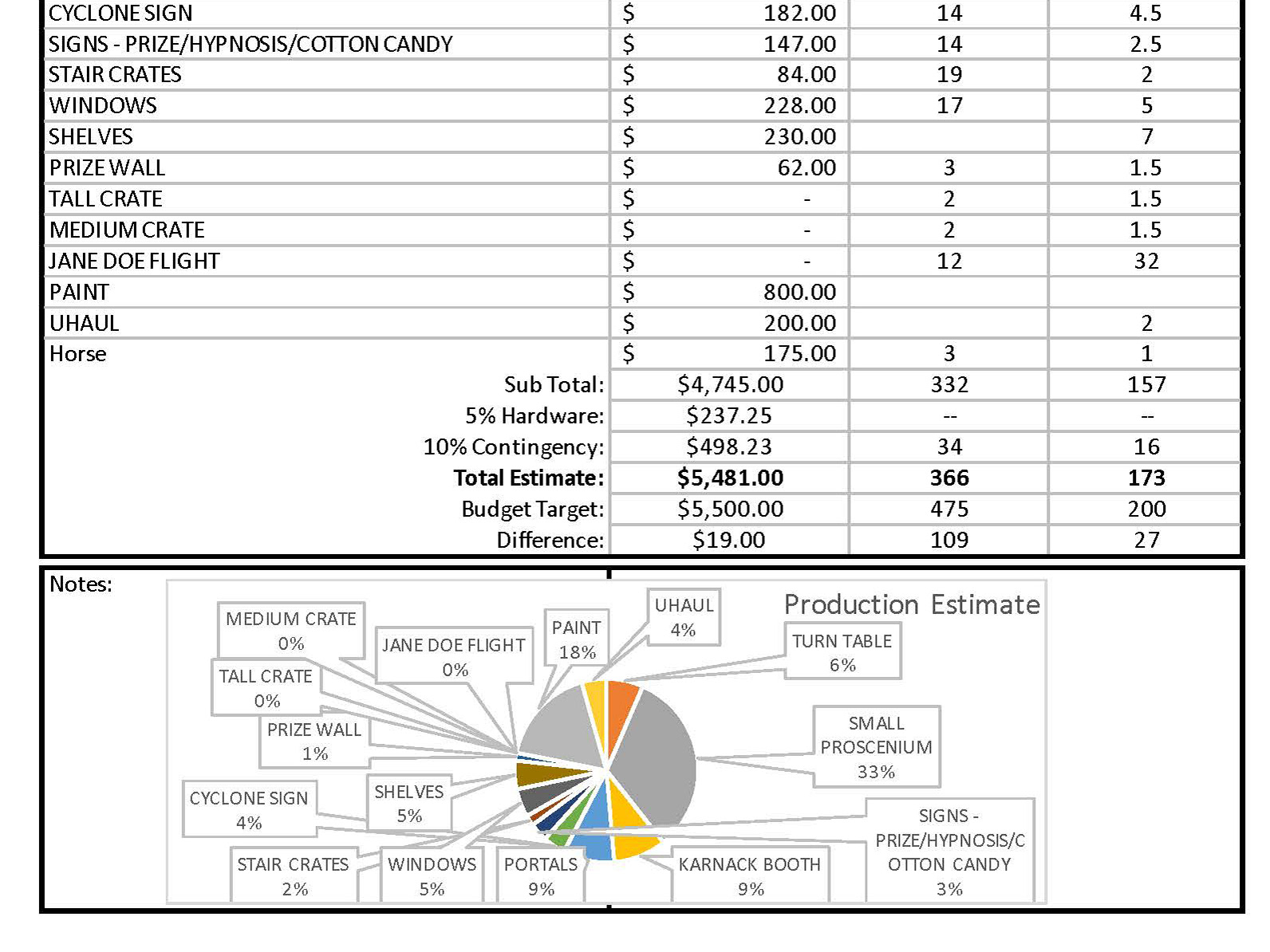Technical Direction
of
THE SKRIKER
by Caryl Churchill
Director: Radhica Ganapath
Scenic Designer: Tamara L. Honesty
Lighting Designer: Alan McEwen
Costume Designer: Mary McClung
Stage Manager: Rachel Rock
Technical Director: Pat LoRicco
ATD: Jacob Geodeke
Navigating Complexity: The Scope of The Skriker
Entering my second semester as a graduate student at West Virginia University, I had the privilege of working on the production of The Skriker by Caryl Churchill. This project presented a unique set of challenges, with irregularly shaped platforms, a dynamic moving portal, special effects, and intricate theatrical rigging. As the Technical Director, I led a team of 22 stagecraft students, overseeing construction, scheduling, budgeting, load-in, tech rehearsals, and strike.
Collaborating closely with my talented Assistant Technical Director (ATD), The Skriker became an endeavor that called for a seamless fusion of creativity and precision. We operated within a total scenic budget of $5700, encompassing expenses for paint and contingency, for the 140-seat thrust Gladys G. Davis Theatre.



Artistry in Wood Construction
The set required three irregularly shaped platforms, each featuring 1-foot cantilever edges. Employing standard scenic construction techniques, I crafted custom tops for these platforms. Two platforms were designed with cut-outs to accommodate special effects to be added later. Stud wall legs were employed to support the cantilevers and bear the weight of the cast while leaving room to install the special effects. Post-installation, the units were covered and faced in ¼” MDF.




Steel Construction
The design called for a shifting portal, reminiscent of a camera iris. To achieve this effect, I constructed three distinct organic-shaped flats, choosing steel frames to ensure structural integrity. I used layers of polystyrene foam sculpted with a hot-wire cutter along the visible edges to create a thicker reveal. The stage right and stage left flats were assembled in three sections, bolted together after load in. We installed a track system in the lighting grid to facilitate seamless on and off-stage transitions. The central flat was rigged to two independent points, allowing for controlled tilting movements.




Automation: The Art of Illusion
One of the downstage platforms was designed to transform into a bench for key scenes. To achieve the effect of it appearing out of nowhere, I installed two pieces of plywood within a cut-out in the platform. The top plywood was attached flush to the deck using a discrete piano hinge. Pneumatic pistons, precisely positioned, facilitated the controlled opening of the bench back. Air hoses were discreetly routed under the scenery to a backstage switch.
Rigging: Elevating the Experience
A custom 2’x2’ bar table with storage was designed to fit within one of the grid squares above the theatre. We devised a rigging system to facilitate its entrance and exit from scenes. The table was rigged with ⅛” wire rope on all four corners, guided through a custom housing with four sheaves. The wire rope was directed up-stage right, then re-routed down with double sheaves. This system allowed for controlled movement, operated by the tech crew.
Conclusion: Precision in Action
The Skriker production demanded a blend of technical skill and creative problem-solving. From constructing platforms to engineering automated effects, each element played a crucial role in realizing the designer’s vision on stage. This project stands as a testament to the power of collaboration and innovation in the world of scenic design and technology.
Check Out My TikTok Videos of The Skriker Process and Effects!



